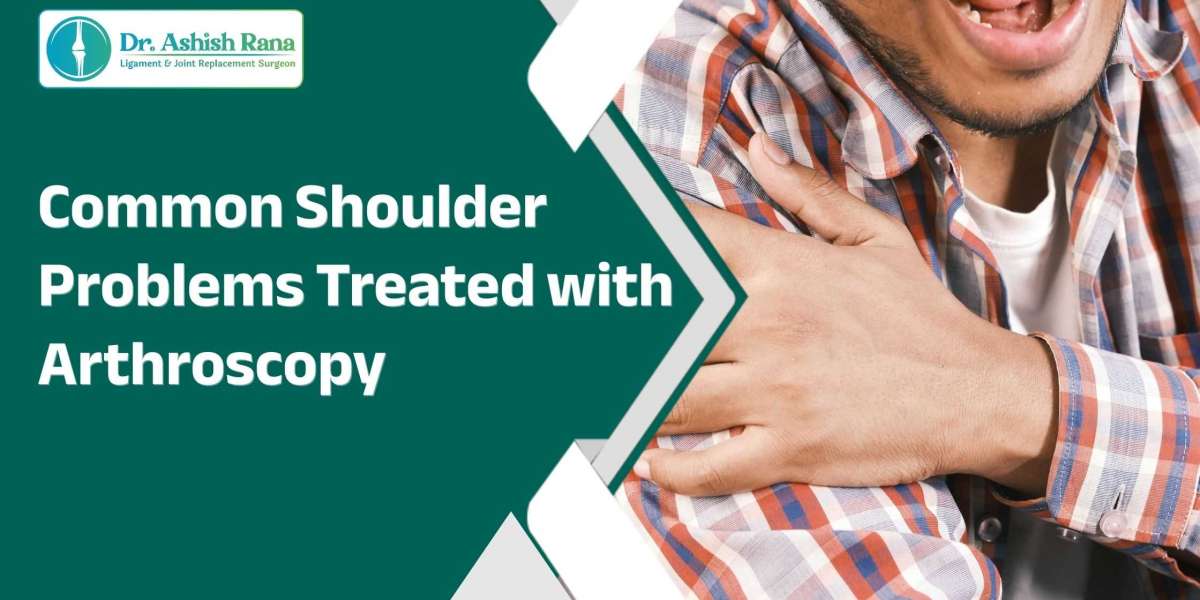Shoulder pain cannot be ignored; why?
Have you experienced a sharp pain in your shoulder while lifting, lifting your hand on your head, or even while you sleep? If yes, you’re not alone. Shoulder pain is actually one of the most common joint complaints, and the majority of people simply “live with it”, waiting for it to disappear. But occasionally, that pain could point to something deeper — like a torn ligament, a cartilage injury, or inflammation. This is where newer treatments, such as Shoulder Arthroscopy Surgeon in Jaipur, come in, providing accurate remedies with very little recovery time.
Arthroscopic surgery of the shoulder has become a workhorse for diagnostic and therapeutic purposes. It’s like a little camera leading the doctor inside your shoulder without the need to make big cuts. Sounds cool, right? Well, let's break it down, keep it simple, and take a look at how this approach can be used to help manage everyday shoulder problems.
What Exactly Is Shoulder Arthroscopy?
Say you were trying to fix something from inside a sealed box. Instead of destroying the box, you slip a little camera into it through a hole and fix the damage with a few tools. That’s precisely what arthroscopy does for your shoulder.
A small incision is made.
A camera (arthroscope) goes inside.
The surgeon looks at everything on a screen and fixes it with little equipment.
It means a sharp recovery, low pain, and fewer scars than traditional surgery.
Why Is Shoulder Arthroscopy Done?
All shoulder pain does not require surgery, but when medications, physiotherapy, or rest are ineffective, orthopedic surgery is the next step. It helps treat problems like:
Rotator cuff tears
Frozen shoulder
Shoulder impingement
Labrum tears
Recurrent shoulder dislocation
Arthritis-related issues
Common Shoulder Problems Treated with Arthroscopy
Rotator Cuff Tears
It’s like a bundle of strong cords holding the shoulder joint in place. But if one of these ropes ruptures from injury or old age, it results in the symptoms of pain, weakness, and limited motion. These tears can be neatly repaired through arthroscopy.
Frozen Shoulder (Adhesive Capsulitis)
You know how you have tried to move your arm and it literally feels “frozen”? It occurs when the shoulder capsule tightens around the joint and becomes inflamed. With arthroscopy,y it is possible to release this stiffness and functioning can be used more smoothly again.
Shoulder Impingement Syndrome
If you’re experiencing pain when lifting your arm overhead, you might be dealing with some impingement. Here, flesh gets pinched between bone. Arthroscopy also helps by shaving away bone spurs and giving a bit more room to move.
Labrum Tears
The labrum is a cushion, loosely speaking, that is loosely attached around your shoulder socket. It can also be torn if injured or if subjected to repeated motion, causing instability. A surgery called arthroscopy stitches it back in place.
Recurrent Shoulder Dislocation
If your shoulder dislocates frequently, arthroscopy can tighten the stretched-out tissues and prevent future dislocations.
Arthritis and Cartilage Problems
While not always fixable, arthroscopy can help smooth damaged cartilage and relieve pain from arthritis.
What Happens During Arthroscopy? (Step by Step)
You’re given anesthesia.
Tiny incisions are created next to your shoulder.
A camera enters a rear cavity, its images projected onto a monitor.
Special instruments repair the problem.
The stabs are then closed using small stitches or bandages.
It will routinely last 1–2 hours for the entire technique.
Recovery After Arthroscopy
Bright side: Recovery is a lot faster than with conventional surgery.
You could use a sling for a few weeks.
PT - Physio is a BIG part of building strength back up.
Most people take just a few months to return to their normal lives.
Keep in mind that it's all about patience—don't move too fast, too early.
Benefits of Shoulder Arthroscopy
Smaller incisions, less pain
Faster healing
Reduced risk of infection
Quicker return to daily activities
Better cosmetic results (tiny scars)
Are There Any Risks?
Arthroscopy is a surgery, so like any, it’s not without some rare risks:
Infection
Nerve injury
Stiffness
Incomplete pain relief
But if you have a good surgeon, the chances are minimal.
When to See a Doctor?
Don’t ignore shoulder pain if:
It lasts longer than a couple of weeks
You feel weakness or instability
You live in its way
Night pain keeps you awake
The sooner you act, the more straightforward the recovery.
Conclusion
Shoulder arthroscopy is simply life-changing. It enables doctors to repair complicated shoulder problems through a small number of incisions, a quicker recovery, and excellent outcomes. Conservative measures often help, but if a rotator cuff tear, frozen shoulder, or recurring dislocation of the shoulder is a chronic problem, arthroscopy can provide lasting relief.
If you’re trying to cope with shoulder pain, a Shoulder Arthroscopy Surgeon in Jaipur might be the first step in reclaiming a life free from pain. And in matters of expert care, a skilled Orthopedic Surgeon in Jaipur can make all the difference in getting you back to your active life.
FAQs
Q1. Is shoulder arthroscopy painful?
You will be under anesthesia for the procedure, so you will not experience pain. Selected as an Answer: Everything you described is completely normal, so don't worry about it ! You're symptoms are about average; some pain after surgery is expected and can be handled by drugs.
Q2. What is the recovery time for shoulder arthroscopy?
Recovery may vary but is typically 2 to 6 months (depending on the condition treated and physiotherapy).
Q3. Can arthroscopy fix arthritis completely?
It can be beneficial for symptoms and for smoothing damaged cartilage, but it can’t actually reverse severe arthritis.
Q4. Is it safe for elderly patients to undergo shoulder arthroscopy?
Yes, the operable word being “generally,” but to be clear, this has to be taken in context with your overall health and the actual shoulder problem.
Q5. Do I require physiotherapy after arthroscopy?
Absolutely! Re: I have buckwheat instead of wheat. Physiotherapy is necessary to restore full movement and strength following surgery.



